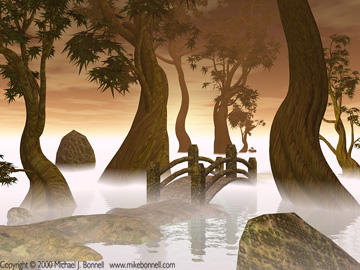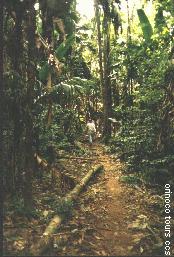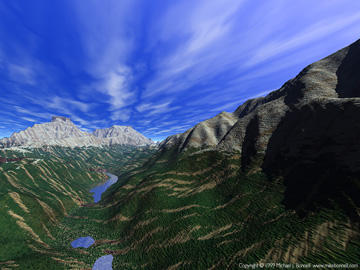

It is important to take note that the history of Eslo shown on this page is only the official government version. We will upload the citizen version of Eslo's history on this page soon.

The Ukabuta indians live in the Amazon rain forest. These people use naturism and tradition as ways of life. There are productive villages among the tribes, peaceful people.
However, in modern day society, this way of living is threatened by the governments of South American countries. This causes a migratory phenomenon deeper into the forest and in various directions for many native tribes.
As the governments and foreign construction companies cut down trees, the Ukabuta people must migrate many miles to the nearest decent and safe living space.
Life began again here for the Ukabuta, as they established their homes again and familiarized themselves with the land, which they worshiped as a source of "everything". The natives were unable to stay long, for just as they had settled in, the government would tear down the acres of land
As real employees of macronational governments, they really had no jurisdiction to do anything significant from where they stood. So, Jose Izzaguerra, one of the founding members commented about the micronation phenomenon. This sounded like a good idea to everyone. However, before this action was implemented, other actions were taken by the founding members to unite more people in the idea. A larger group of people then supported activities organized by groups and organizations like Greenpeace. This included a short trip to the Amazons by a few of the members.
Then, the brainstorm for the political structure of the micronation began. Jose Izzaguerra was elected provisional leader until an electoral political rule was organized. Departments were planned and policies regarding envorionment, health, education, commerce, interior, and international affairs.
Then an intensive plan began to recruit citizenery. This naturally appealed to the public and The Republic of Eslo was founded on June 5th, 1995.
Since then, Eslo grew in citizen numbers and experienced various reforms and ammendments to it's constitution. We have made great advances, and still fight for the peace and right to live of the Ukabuta and any other person that has been forced off their land.
In the year 1998, Eslo discovered that there were micronations on the internet. This came as a satisfactory shock to our government. We began to do research and even established diplomatic relations with some of them. Eslo's foreign policy had some reforms and a few changes were made in the cabinet in order to prepare Eslo for entry into the big and true micronational world.
In the year 2000, The Republic of Eslo sets up it's first website through one of it's embassies that have been set up worldwide. Technology begins to play an importnat factor in the advance and future growth of Eslo. Then (Your name here) reads about the history of Eslo. And thats where we stand up until now.


